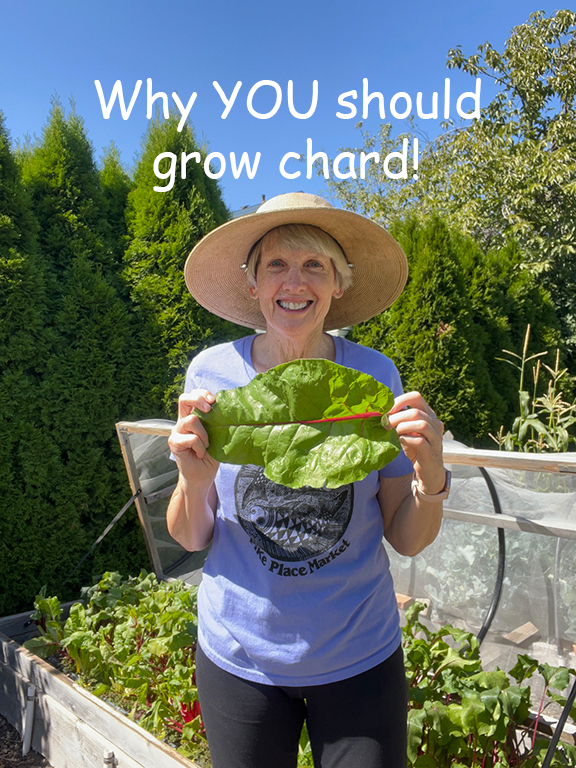How to Grow Swiss Chard

I grow Swiss chard every year, without fail. That’s because it’s heat-tolerant and if you harvest individual leaves rather than whole plants, they’ll feed you all season long!
Latin name: Beta vulgaris ssp. vulgaris
Plant Family: Beet (Amaranthaceae)
Cool-season crop
Did You Know?
Swiss chard is native to southern Europe and cultivated for its leaves and stems. In a field trial conducted by the Organic Seed Alliance, they discovered something interesting. Lighter-colored cultivars are more cold-tolerant, although darker-leaved cultivars are higher in antioxidants. In addition to being delicious, Swiss chard is an excellent substitute for spinach because it tolerates hot weather beautifully.
Plant Seeds or Seedlings? Sow seeds directly in the garden.
When: Early spring
Days to Germination: 5 to 7 days
Depth to Sow: 1/2 inch
Spacing: Sow seeds 2 inches apart, thin later to 12 inches apart
Days to Maturity: 50 to 60
Cultural Information:
When you grow Swiss chard, you’ll notice the seeds look just like beet seeds. That’s because they’re related. Swiss chard seeds are comprised of multiple seeds clustered together. They do not need to be separated. As the plants grow, slowly thin them to an eventual spacing of 12 inches. Remember to use the ones you pick as greens for salads! If you know that leafminers are prevalent in your area, cover the bed immediately after planting. Swiss chard does not require pollination so you can leave the cover over them for the whole season.
Susan’s Picks: ‘Bright Lights’, ‘Peppermint Stick’, ‘Pot of Gold’, ‘Ruby’, ‘Silverado’
Potential Insect Problems: Leafminers, slugs
When to Harvest:
Use a knife or scissors to pick leaves while they are young and tender. Cut them them right above the base of the plant. Harvest individual leaves rather than whole plants. That way, they will continue to produce for you during the entire season.
How to Cook & Preserve:
Swiss chard is at its best when steamed. I like to saute onions, add the leaves and cook them until they wilt; a splash of red wine vinegar provides a nice flavor enhancement. To freeze leaves for later use, steam or saute them, let cool and place in freezer bags.
My Videos About Growing Swiss Chard:
- Organic Insect Control: Aphids, Cabbage Worms & Leafminers
- Beets, Swiss chard, Row Cover
- Planting Leeks, Beets & Chard
- Organic Insect Control: Flea Beetles, Hornworms, Slugs & Snails
Back to Vegetable Grow Guide Chart
Copyright: Susan Mulvihill, Susan’s in the Garden, SusansintheGarden.com.

